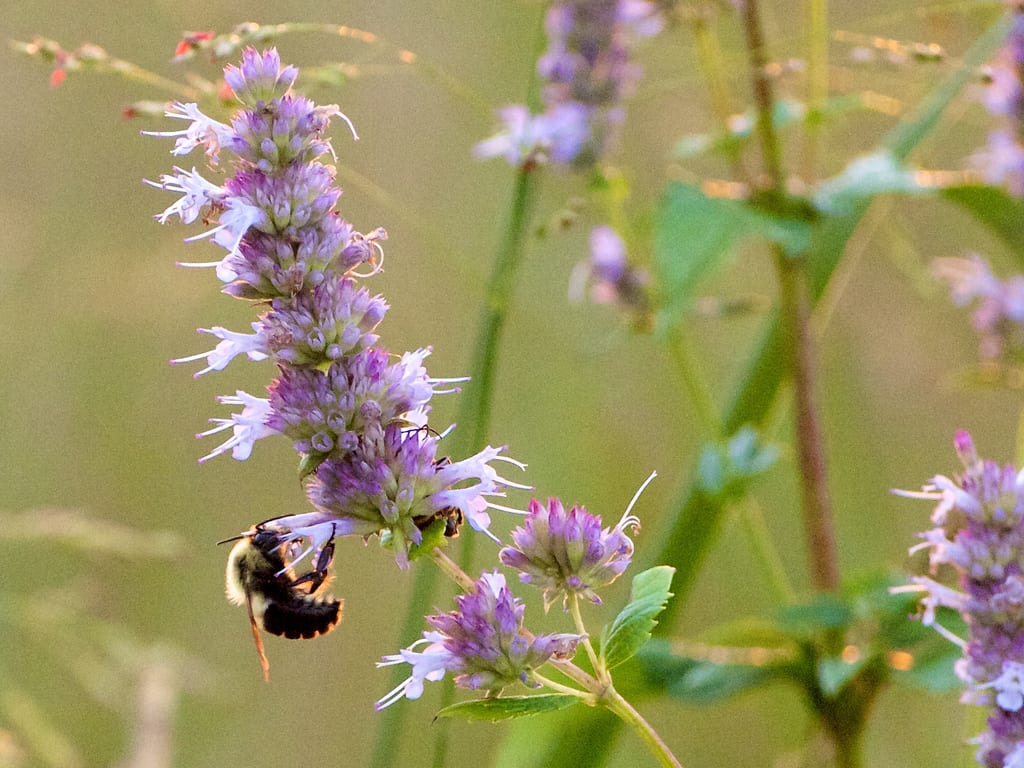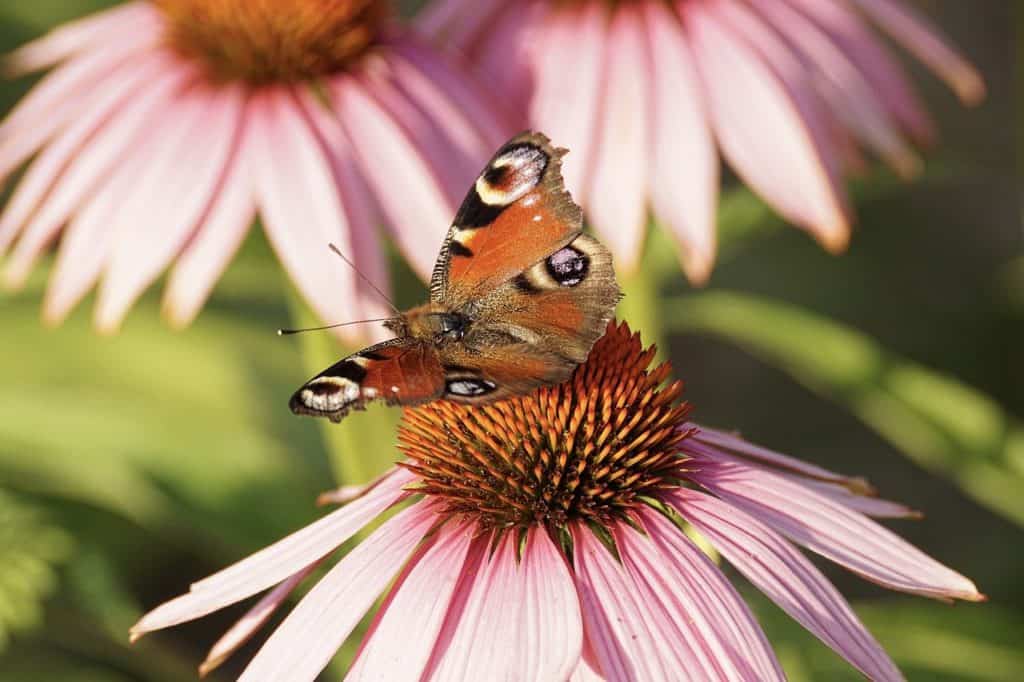Historic Native Plant Profile: Purple Coneflower (Echinacea purpurea)
Significance in History and Uses:
The Purple Coneflower, scientifically known as Echinacea purpurea, has a rich history deeply intertwined with Native American traditions. Indigenous tribes like the Plains Indians used Echinacea as a medicinal plant for centuries. It was employed to treat a variety of ailments, including infections, wounds, and snake bites. With its arrival in Europe in the 18th century, Echinacea gained popularity as a herbal remedy, particularly as an immune system booster. During the 19th century, it was a common ingredient in American folk medicine.

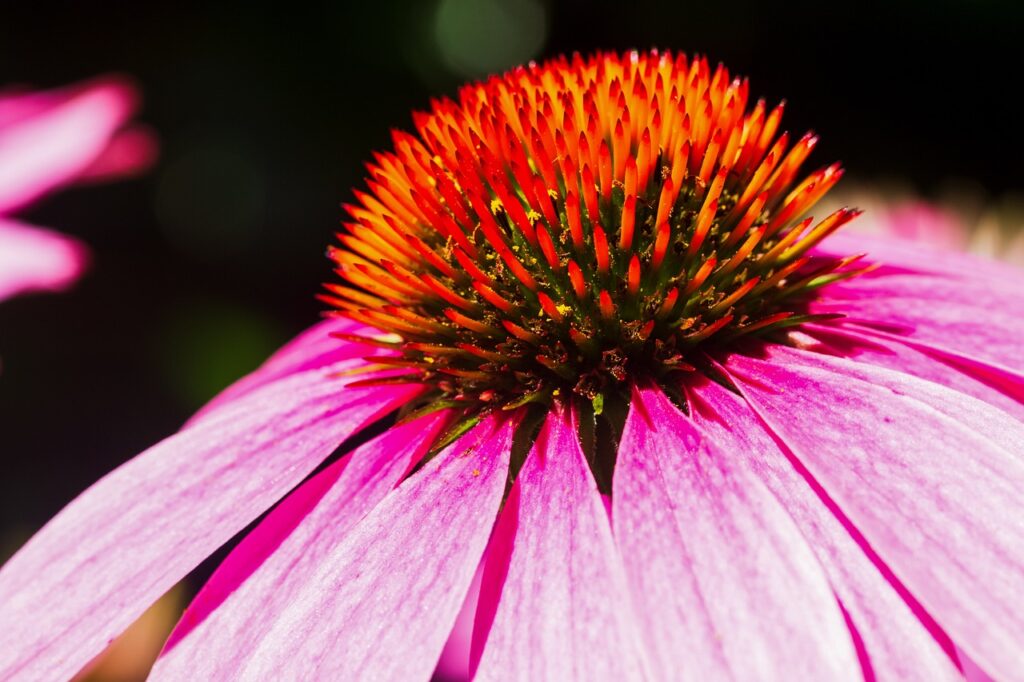
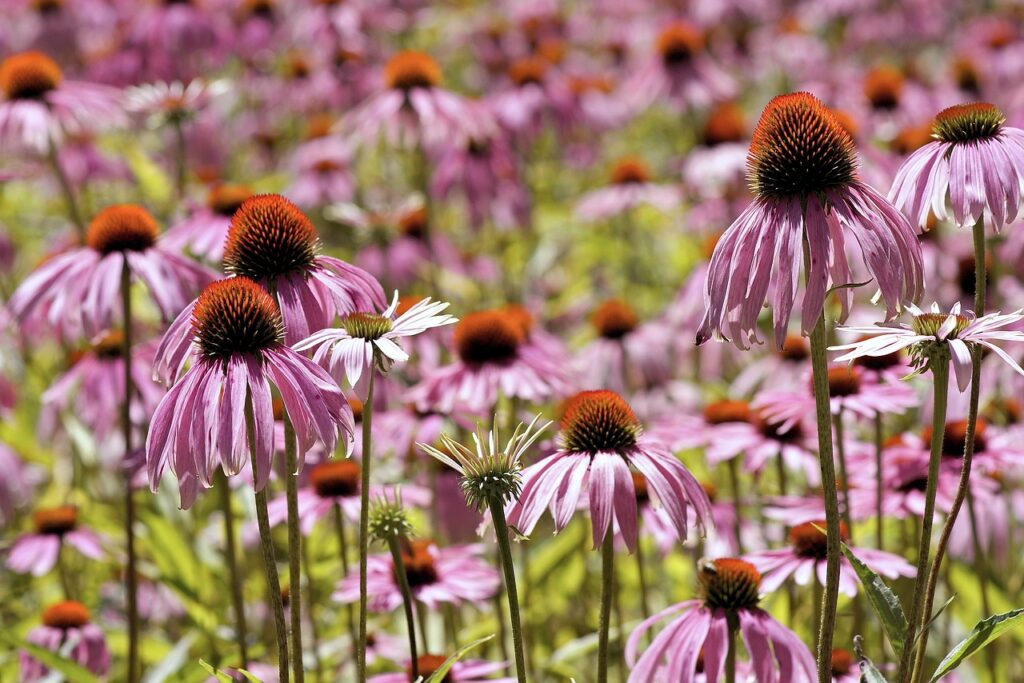
Uses:
Purple Coneflower is renowned for its medicinal properties. The roots, leaves, and flowers have been used to produce teas, tinctures, and extracts that are believed to enhance immune function, reduce inflammation, and act as an antiviral agent. Modern herbalists often recommend Echinacea to help fight colds and flu, though scientific evidence on its efficacy varies. Beyond its medicinal uses, Purple Coneflower is also valued as an ornamental plant, offering vibrant color and structure to gardens.
Benefits:
• Medicinal: Known for its potential to boost the immune system, reduce the duration of colds, and provide anti-inflammatory effects.
• Ornamental: Its long-lasting blooms and hardy nature make it a favorite in perennial gardens.
• Ecological: Echinacea purpurea is a pollinator magnet, attracting bees, butterflies, and other beneficial insects.
Host and Habitat Role in Biodiversity:
Purple Coneflower plays a crucial role in supporting biodiversity. As a native plant, it provides essential resources for local wildlife. It is particularly beneficial for pollinators, including native bees, butterflies, and wasps. The seeds of the Purple Coneflower are a food source for birds, particularly goldfinches. Additionally, Echinacea serves as a host plant for the larvae of some butterfly species, contributing to the lifecycle of these insects. Its deep roots help prevent soil erosion, making it an excellent plant for maintaining soil health in its native habitats.
Echinacea, including Echinacea purpurea (Purple Coneflower), primarily serves as a nectar source for adult butterflies rather than as a host plant for their larvae. However, there are some butterfly species whose larvae (caterpillars) might occasionally use Echinacea, though it is not their primary host plant. These butterflies are more likely to lay their eggs on plants in the Asteraceae family, to which Echinacea belongs.
Notable butterfly species that are often associated with Echinacea include:
• Silvery Checkerspot (Chlosyne nycteis): The larvae of this butterfly primarily feed on plants in the Aster family, such as sunflowers (Helianthus), but they may also feed on Echinacea species.
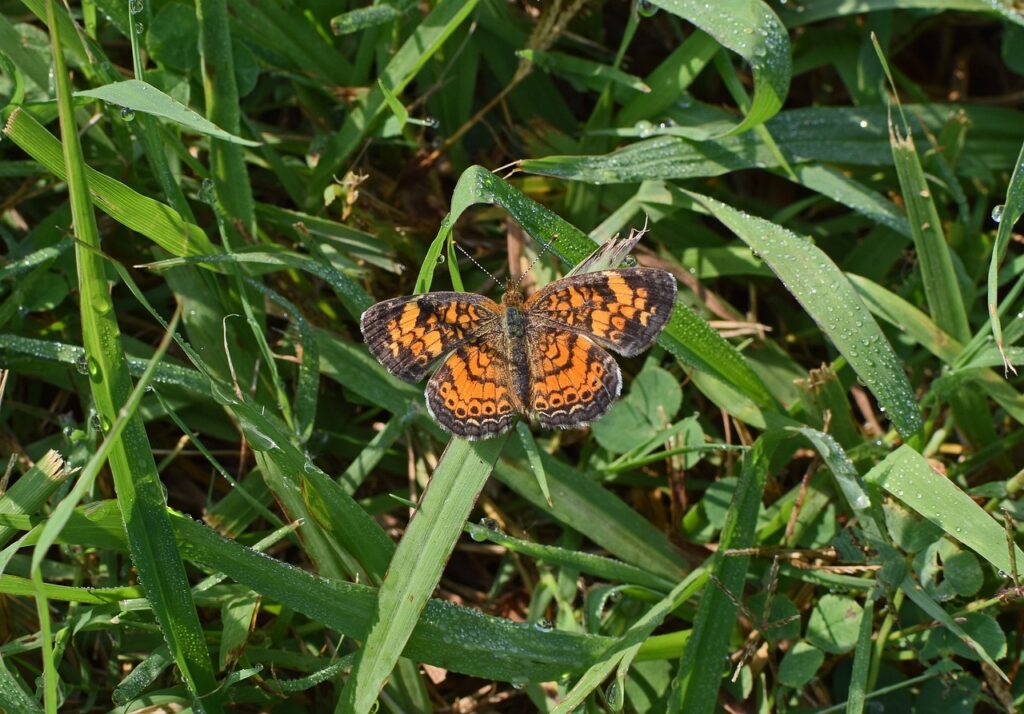
• Pearl Crescent (Phyciodes tharos): Similar to the Silvery Checkerspot, the Pearl Crescent caterpillars prefer plants like asters but can occasionally be found on Echinacea.
While Echinacea might not be a primary host plant for specific butterfly larvae, it is still invaluable in supporting adult butterflies by providing nectar, which helps sustain their populations.
Native Range:
Echinacea purpurea is native to the central and southeastern regions of the United States. It thrives in open woods, prairies, and meadows, particularly in well-drained soils. Its adaptability has allowed it to spread beyond its native range, and it is now widely cultivated across North America.
Worthy Cultivars:
• ‘Magnus’: A popular cultivar known for its large, bright pink-purple flowers with an orange cone. It is noted for its upright growth habit and long blooming period.
• ‘White Swan’: This cultivar features pure white petals with a contrasting yellow-orange cone, offering a different color variation while maintaining the same hardiness.
• ‘PowWow Wild Berry’: Compact and floriferous, this cultivar boasts vivid magenta flowers and is known for its long bloom time and drought tolerance.
• ‘Kim’s Knee High’: A dwarf variety, perfect for smaller gardens, with rosy-pink flowers that bloom on shorter stems.
• ‘Green Twister’: A unique cultivar with green-tipped petals fading into rosy pink, offering a striking and unusual appearance.
Purple Coneflower is not only a historical and medicinal marvel but also a cornerstone of ecological and ornamental gardening. Its presence in the garden enhances biodiversity and offers both aesthetic and practical benefits.
The tendency for cultivars to be shorter-lived compared to straight species and their differences in reseeding ability can be attributed to several factors:
Cultivars vs. Straight Species:
We get lots of questions about the growing of cultivars alongside eco-regional, native plants
1. Genetic Diversity:
• Cultivars: Cultivars are bred for specific traits, such as flower color, size, or form. This selective breeding often results in a narrower genetic pool, which can lead to reduced resilience and adaptability. Cultivars might be less hardy and more susceptible to pests, diseases, or environmental changes, affecting their longevity.
• Straight Species: Straight species (the wild or original form of a plant) have a broader genetic diversity. This diversity enhances their ability to adapt to varying conditions and often makes them more resilient. Their natural adaptation helps them survive longer in the wild and often contributes to their ability to reseed and maintain populations over time.
2. Adaptability:
• Cultivars: Because cultivars are selected for specific characteristics, they may not perform as well outside their optimal conditions. For instance, a cultivar bred for a particular soil type or climate may struggle to thrive in less ideal conditions, leading to a shorter lifespan.
• Straight Species: Straight species are adapted to a wider range of conditions due to their evolutionary history. This adaptability can result in a longer lifespan and the ability to reseed more effectively.
3. Reproductive Traits:
• Cultivars: Many cultivars are selected for their ornamental traits, which can sometimes come at the expense of reproductive vigor. For instance, some cultivars may produce fewer seeds or have reduced viability, impacting their ability to reseed and perpetuate themselves.
• Straight Species: Straight species generally have well-established reproductive strategies. They are more likely to produce viable seeds and self-seed effectively. Their reproductive success contributes to their longevity and ability to maintain populations over time.
4. Management and Care:
• Cultivars: Cultivars often require more specific care and maintenance to thrive, which can affect their long-term survival. If they are not given the ideal conditions or proper care, they may decline more rapidly.
• Straight Species: Straight species are often more robust and less demanding in terms of care. They can thrive in a variety of conditions with minimal intervention, supporting their long-term survival and natural reseeding.
Examples:
• Purple Coneflower (Echinacea purpurea): The straight species is known for its resilience, ability to reseed, and long-term presence in the garden. In contrast, some cultivars, such as those bred for specific flower colors or forms, may not reseed as reliably and often have shorter lifespans due to their specialized breeding.
• Black-eyed Susan (Rudbeckia hirta): The straight species tends to be hardy and capable of reseeding effectively, while some cultivars with unique flower shapes or colors may have reduced longevity and less effective reseeding.
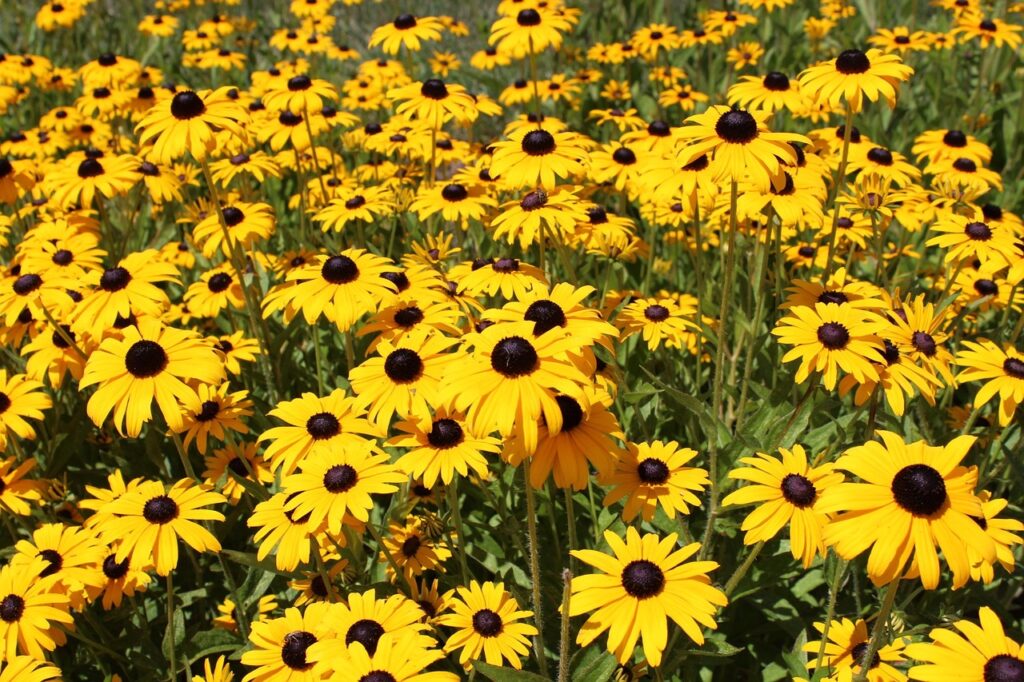
Understanding these differences can help gardeners and landscapers choose plants that best fit their needs and conditions. While cultivars offer unique aesthetic qualities, straight species often provide better resilience, longevity, and natural reseeding capabilities.
I often refer to this list of references and research materials about Purple Coneflower (Echinacea purpurea), covering its native origins, uses, and modern cultivars:
Books:
1. “The Plant Lover’s Guide to Echinacea” by Richie Steffen and Sue Bottom
• Provides an in-depth look at various Echinacea species and cultivars, including their history, uses, and horticultural practices.
2. “Medicinal Plants of the Midwest” by Michael Moerman
• Covers medicinal uses of plants native to the Midwest, including Echinacea, with detailed descriptions of their historical and contemporary uses.
3. “The New Healing Herbs: The Classic Guide to Nature’s Best Medicines” by Michael Castleman
• Offers information on the medicinal properties of various herbs, including Echinacea, with practical advice on their use and efficacy.
4. “Wildflowers of the Midwest” by Sylvan R. Kaufman and Wallace R. Kaufman
• Includes information on the native habitats and uses of Midwest wildflowers, including Purple Coneflower.
5. “The Encyclopedia of Medicinal Plants: A Practical Reference Guide to over 550 Key Herbs and Their Medicinal Uses” by Andrew Chevallier
• Comprehensive reference guide on medicinal plants, including Echinacea, with detailed sections on their uses and benefits.
Research Articles:
1. “Echinacea: A Review of Its Pharmacological and Clinical Properties” by A. L. K. V. Ho and R. J. T. J. Ling
• A detailed review of the pharmacological properties and clinical applications of Echinacea.
2. “Phytochemistry and Pharmacology of Echinacea: Review of Recent Studies” by S. G. Cech
• An overview of recent research on the phytochemistry and pharmacological effects of Echinacea.
3. “Echinacea and the Immune System: An Evidence-Based Review” by R. G. K. Haywood and S. J. H. Williams
• An evidence-based review of Echinacea’s impact on the immune system, discussing efficacy and research findings.
4. “Effects of Echinacea on the Immune Response: A Meta-Analysis” by M. L. C. Stoll and T. J. R. Jones
• A meta-analysis of studies examining the effects of Echinacea on immune function.
5. “Echinacea: From Traditional Use to Modern Applications” by J. R. G. Smith and L. A. Thompson
• Explores the transition of Echinacea from traditional herbal use to modern therapeutic applications.
Websites and Online Resources:
1. Missouri Botanical Garden Plant Finder – Missouri Botanical Garden
• Provides detailed information on various Echinacea cultivars, including their characteristics and care.
2. North Carolina State University Extension – NC State Extension
• Offers resources and articles on Echinacea and its uses in gardening and landscaping.
3. The Herb Society of America – Herb Society
• Provides information on the medicinal uses of herbs, including Echinacea.
4. The National Gardening Association – National Gardening Association
• Features articles and guides on growing and caring for Echinacea.
5. PubMed – PubMed
• A database of scientific articles where you can find research studies on Echinacea’s medicinal properties and clinical trials.
These resources should provide a comprehensive understanding of the Purple Coneflower’s history, uses, and modern cultivars, as well as its significance in both traditional and contemporary contexts.

